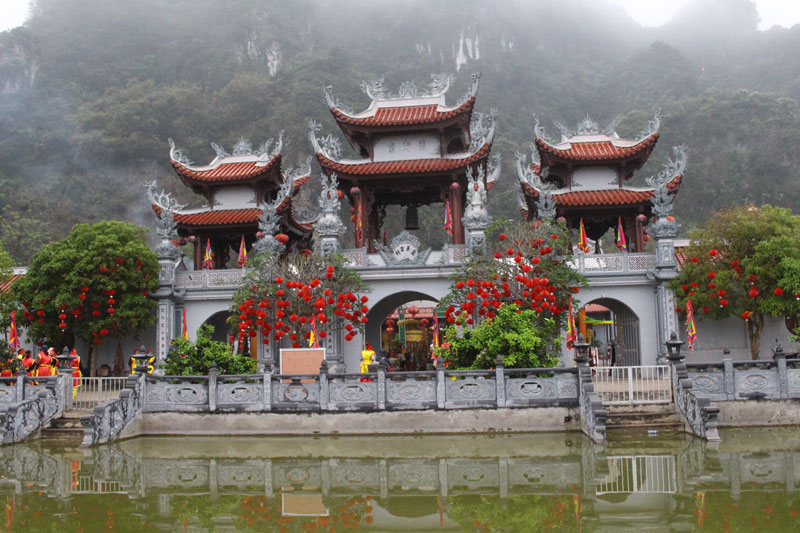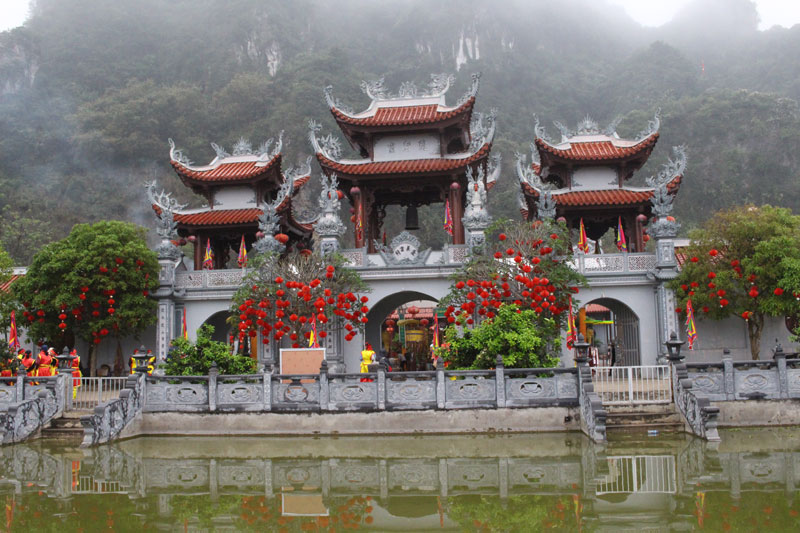
(HBO) - Cao Phong district aims to 2025, tourism becomes a key economic sector of the district. To achieve this goal, the district attaches special importance to developing tourism in association with preserving and promoting the cultural identity.

Bong Lai
Temple, Area 3, Cao Phong town is attractive destination of the district.
Coming to Cao Phong, tourists not only
experience and explore charming scenery but also study and understand the
unique culture of Muong people. Muong Giang Mo village (Binh Thanh commune) is
the ideal place for source tours, community culture exploration. Giang Mo village
has more than 100 stilt houses.
Cao Phong district is famous for its
historical-cultural relics associated with major festivals such as: Bo Temple
Festival (Thung Nai commune); Khanh Temple festival (Yen Thuong commune); Quen
Ang Pagoda festival (Tan Phong commune);
Thuong Bong Lai temple festival (Cao Phong town)...
Tourism development associated with preserving
and promoting the cultural identity has contributed to attracting a lot of
tourists to visit and explore Cao Phong district. In the first quarter of 2019,
the whole district received 210,217 visitors; revenue from tourism reached VND
15.1 billion.
In the coming time, Cao Phong district will
continue to exploit unique values in customs, culture and cultural and
historical relics to develop tourism. The Party Committee and local authorities
are determined to achieve the target by 2025, tourism becomes a key economic
sector of the district. Tourism will contribute to economic restructuring,
sustainable poverty reduction, job creation, increased revenue for the budget
and a driving force for promoting other economic sectors to develop.
A diverse chain of eco-tourism and resort destinations concentrated in Hoa Binh city and the districts of Tan Lac, Da Bac, and Luong Son… Along with the launch of several key high-quality resort tourism projects, these developments have reshaped the landscape and enhanced the appeal of Hoa Binh as a travel destination.
Boasting diverse terrain, a mild climate, and rich natural resources, Cao Phong district is increasingly asserting its place on Vietnam’s tourism map, attracting both domestic and foreign visitors. The district is renowned for its stunning landscapes, majestic mountains, a crystal-clear hydropower lake, and the unique cultural identity of local ethnic groups.
With its pristine landscapes, unique cultural heritage of Muong ethnic minority, and an expanding range of visitor experiences, Tan Lac district of Hoa Binh has fast become a captivating destination for both domestic and international tourists.
Until now, Sung village in Cao Son commune, Da Bac district remains the only Dao ethnic community in Hoa Binh province to develop a community-based tourism model. Beyond its untouched natural landscapes, cultural identity serves as the cornerstone attraction for visitors.
Alongside the diverse cultural identities of the Kinh, Muong, Tay, Thai, Dao, and Mong ethnic people, Hoa Binh province is also renowned as the "capital" of the northwestern Vietnamese cuisine, offering unique and distinctive dishes. At festivals, during Lunar New Year (Tet), or on significant family or community occasions, special dishes are prepared, leaving a lasting impression on visitors.
A Phong Linh (Yellow Tabebuia) flower garden in Thang village, Thach Yen commune, Cao Phong district is currently in full bloom, drawing a large number of visitors.



